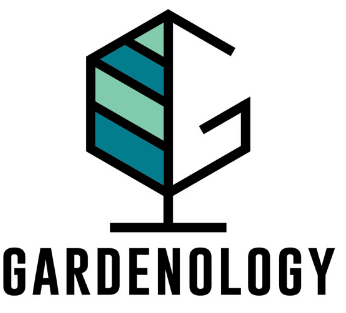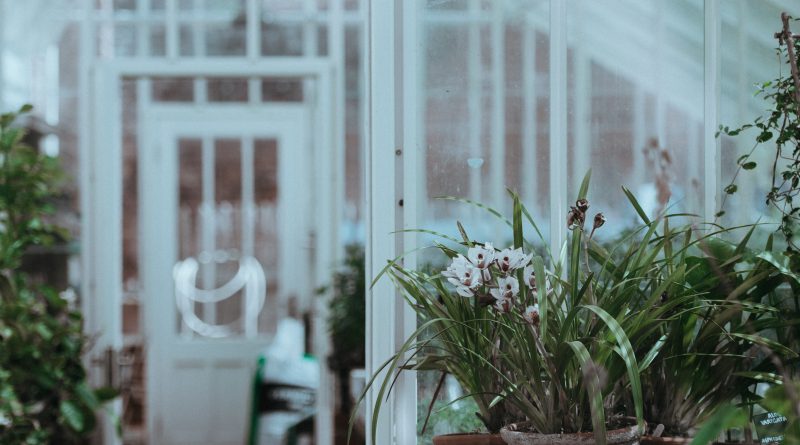Container Gardening
Container gardening is using pots, planters and containers to grow edible and non-edible plants. It is the most ideal method in an urban setting where space, poor soils and time are all an issue.
Benefits of Container Gardening
1) Container gardens can fit into whatever space you have available to you because all you have to do is choose the right size containers.
2) You do not have to worry about poor soils because you will control that by using the right soil for the right plants.
3) You do not need special equipment to grow plants in containers. This makes it a great gardening choice for beginners.
4) You save money if you grow your vegetables, and if you have extra you can always make money by selling the extra.
Important Factors To Consider
1) Drainage Holes
No matter the container size you use, it should have drainage holes to allow excess water drain from it. Proper drainage encourages healthy root growth and also allows oxygen to circulate.
2) Container Size
The size of the container will be determined by the space you have and the plants you will grow. Choose a container that will accommodate the plants, and not create stress for them.
3) Appearance
Depending on where you intend to place the containers, then appearance may or may not matter.
Getting Started
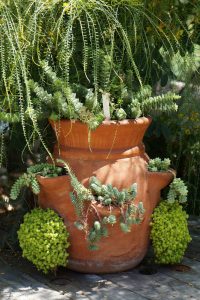
1) Choosing Containers
Choosing the right containers depends on several things. Price can be a concern and the option of recycling containers you have around the house is an option. Recycled plastic water bottles are a common choice for urban dwellers and these work great as long as you remember to put drainage holes at the bottom. From my experience, these bottles work great for a while but as they age, they don’t look so great.
Plastic planters are a great option because they are inexpensive, light, durable and can be fashionable.
Clay pots are an ancient yet reliable choice. They are also relatively light and if you are looking for a rustic, cottage or farmhouse feel then these are a great choice. Clay, however, does not do well in cold areas as they tend to crack if moisture is left in them or if the soil is wet over some time. They can also break easily if handled too much.
Aluminium planters are appealing and durable. They can, however, be heavy and difficult to move around.
Hypertufa and concrete planters are an excellent option for a forever spot as part of the landscaping. They blend well into the environment.
At the end of the day, all containers should have drainage holes at the bottom.
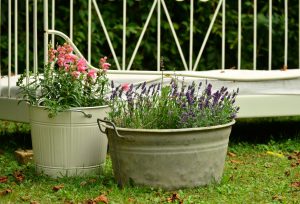
2) Placing Containers
Containers become heavy after you put soil so it is advisable to place them at the right spot. The perfect spot is where they will receive morning sun and afternoon shade. The afternoon shade will reduce moisture loss.
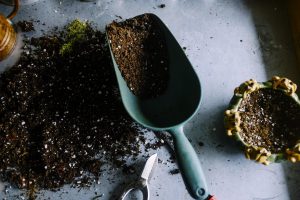
3) Preparing Containers
Now it is time to put soil. Soil is the foundation of healthy plant life. Using the right soil will make all the difference for you in your container gardening. Potting soil is still a very niche field in Kenya and unlike the western world that is spoilt for choice when it comes to pre-made potting mixes, we do not have this just yet. This means that urban gardeners are left to their own devices to figure out exactly what the right potting mix is.
Garden Soil in Containers
Garden soil may work in containers but it comes at the risk of importing disease organisms, weed seeds and pests that can cause harm for your plants.
DIY Potting Soil
You can make your all-purpose potting soil at home as follows
Ingredients
2 cups Fine Sand
1/2 bucket Vermiculite
1/2 bucket Compost (or composted cow manure)
1 bucket Peat Moss
1/2 cup Lime
Mix all ingredients thoroughly
Putting Soil in Containers
It is not necessary to put rocks at the bottom of the container as this could lead to blockage. If you are concerned about soil washing out, you can line the container with newspaper.
Put the potting soil in the container, add water and mix thoroughly ready for planting.
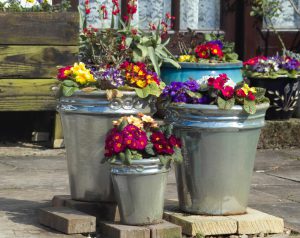
4) Planting In Containers
Almost any herb, vegetable, flower or dwarf variety fruit will grow successfully in containers. You, however, have to consider your climate and select the plants that will thrive in your climate. Combining plants using the thriller, filler and spiller techniques creates eye-catching gardens.
5) Caring for your Container Garden
Water container plants often and thoroughly. Use mulch so as to retain moisture but keep the mulch away from the stems of the plants. Feed your plants with the right organic food and keep your containers neat and clean.
